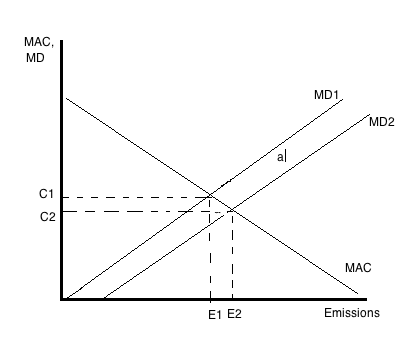Course:ECON371/UBCO2010WT1/GROUP5/Article 2
Back to
Amazon Under Threat From Cleaner Air
Summary
This article poses the question: Is cleaner air always better? The article refers to a large study conducted in a joint effort by the University of Exeter, Centre for Ecology and Hydrology, Met Office Hadley Centre, and Brazilian National Institute for Space Studies, which suggests that our actions to reduce sulphur dioxide emissions from burning coal might increase the risk of drought in the Amazon basin. This is because sulphate particles in the atmosphere have partially reduced global warming by reflecting some of the sunlight back to space, the study posits. This has acted as a boundary, primordially at the tropical North Atlantic, and thus kept those areas cooler and wetter. WIth the reduction of the sulphate emissions, the ocean temperatures would rise and move the clouds that keep the tropical North Atlantic at current levels of humidity, and so increase the risk of drought.
Dr Matthew Colins, a co-author of this study explains that the Amazon rainforest is facing many pressures like direct deforestation and climate change. Compounded, all these weaken the "self-resilience of the rainforest." To sum up, all these findings show the complexity of climate change. To improve air quality it is necessary to reduce atmospheric pollution, but as the lead author of the study, Prof. Peter Cox, states, this must be done through drastic cabon dioxide emissions to prevent further damages to the Amazon rainforest

Analysis
The results of the study display some important economic concepts regarding environmental policy. The first important concept at work here is the complexity of calculating abatement costs and damages across a single pollutant - it is not easy to measure the marginal abatement cost and damage for certain behaviours. In this instance, when policy was made to address sulphate emissions in the developed nations (mostly located around the northern hemisphere, such as Canada, the EU, etc.) a certain abatement cost and damage was calculated as efficient, probably per the equi-marginal principle of holding these two together. As sulphate aerosol particles emissions are abated, there is undoubtedly some decrease in pollution damage. It is evident, however, that either the data collected was insufficient, or this is just another case of a negative externality, as engaging in this particular behaviour - cleanup and emission reduction- has averse consequences for the Amazon basin. When the calibration is performed, we can see that damages are greater than what the theory/model predicted.
Some model employed might have yielded an optimal (or nearly optimal) level of emissions. Assuming that we are in that optimal level, marginal damages and marginal abatement costs are equal. However, when collecting data, we can clearly see that there were some unaccounted-for damages. That means that at the current level of emission output, the benefit from abatement is actually less than the one calculated- the area under the marginal damage cost curve is less than our predicted one. In the diagram below, the new marginal damages curve, MD2, yields a lower benefit under the new optimal level of emissions, and the reduction is equal to the area "a", between the two MD curves.
Another important aspect to keep in mind is the concept of fairness. Whilst in strict terms economics considers efficiency over equality, society does put a certain value - even to some extent, a monetary value - to equality. Abatement in the developed nations generates some net benefit for the planet, but the brunt costs are accrued by the populations that live near the Amazon rainforest, such as Peru, who historically has suffered greatly on account of draughts (see Article 1.) Consumer surplus in these regions is actually diminished, as the damages and costs are greater by the reduction in sulphates at the atmospheric level. This seems counter-intuitive, but as a society we place value on fairness. It goes to show that policy for environmental protection is not a simple matter.
Conclusion:
The research suggests the many folds and dimensions of environmental change across the globe. It allows us to infere how difficult it is to design a truly perfect and effective environmental policy, where the net gains outweigh the costs. Even with a seemingly optimal emission output, the costs are not equally distributed across the population, and might not accurately represent the real costs and damages. It seems that, in order to truly see some results, the planet will have to undergo some drastic reduction in carbon dioxide, as an effective abatement method. Otherwise, most policies will be riddled with cases such as the one the study presents.
Prof's Comments
Nice.
